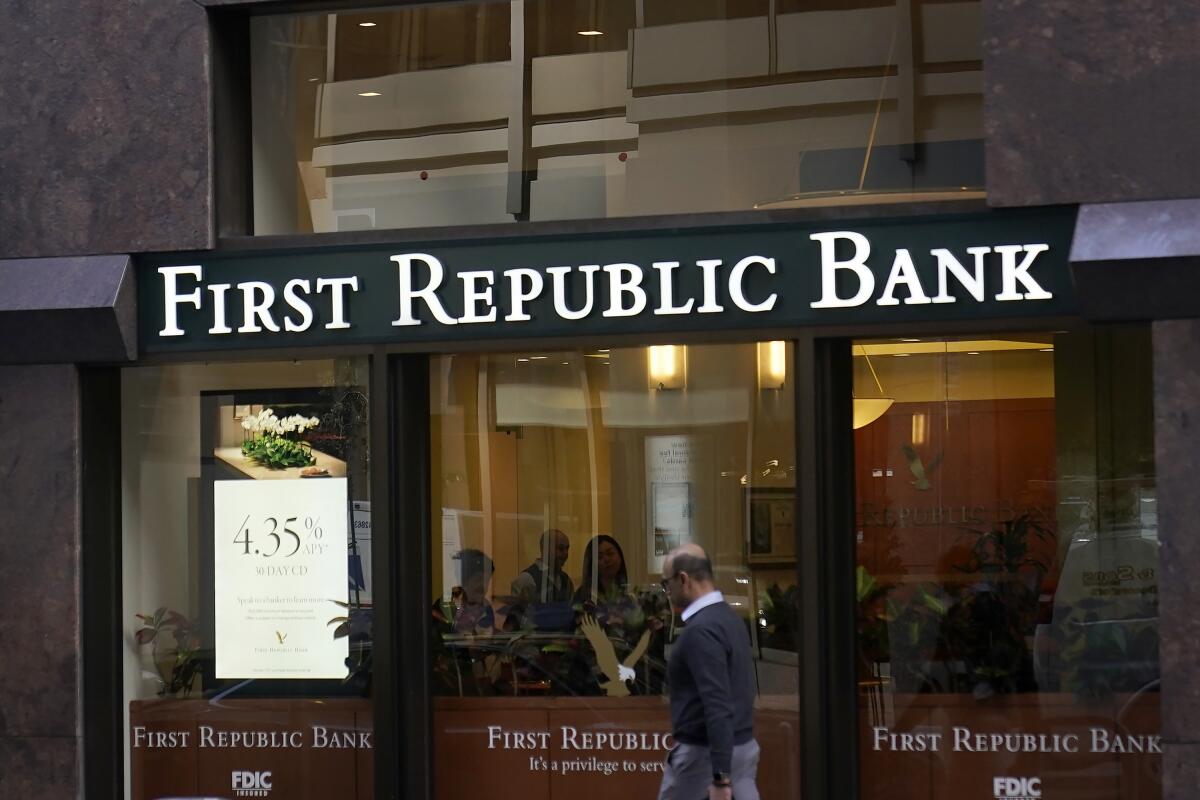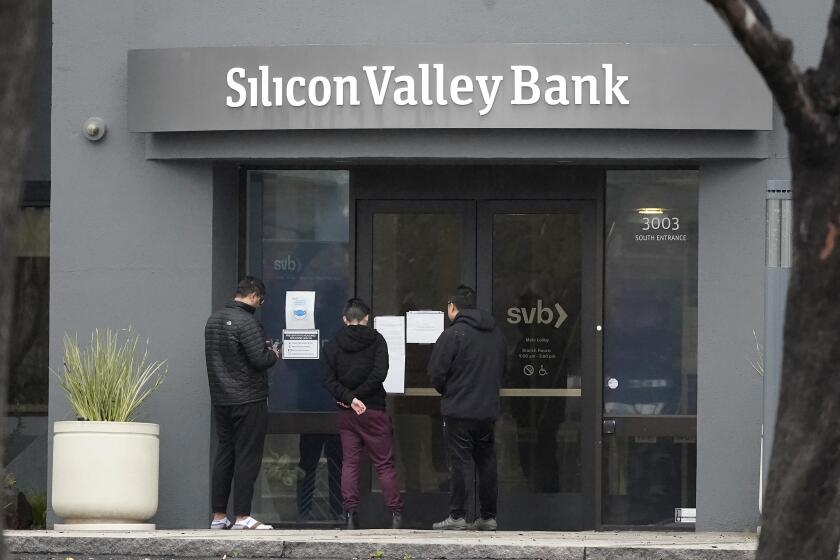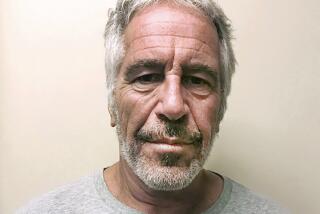Regulators seize First Republic Bank, sell its assets to JPMorgan Chase

- Share via
NEW YORK — Regulators seized troubled First Republic Bank and sold all of its deposits and most of its assets to JPMorgan Chase in a bid to head off further banking turmoil in the U.S.
San Francisco-based First Republic is the third midsize bank to fail in two months. It is the second-biggest bank failure in U.S. history, behind only Washington Mutual, which collapsed at the height of the 2008 financial crisis and was also taken over by JPMorgan.
“Our government invited us and others to step up, and we did,” said Jamie Dimon, chairman and chief executive of JPMorgan Chase.
First Republic’s 84 branches opened Monday as branches of JPMorgan Chase, which acquired the bank’s $92 billion in deposits and $203 billion in loans and other securities. The bank’s shareholders are likely to be wiped out as part of the deal.
Dimon said in a conference call with reporters and investors that he believed “this part of this [banking] crisis is over.” Other midsize banks reported their results last week and the vast majority of them showed deposits had stabilized and profits remained relatively healthy. The outlier was First Republic.
Before this year, First Republic was the envy of the banking industry. Its well-appointed branches served warm cookies to its clients — who were almost exclusively the rich and powerful. Its bankers lured in wealthy clients with low-cost mortgages and attractive savings rates in order to sell them on higher-profit services such as wealth management and brokerage accounts. In return, the wealthy rarely defaulted on their loans and parked substantial sums of money in the bank that could be lent elsewhere.
But that business model of catering to the rich became a liability with the collapses of Silicon Valley Bank and Signature Bank. These banks had large amounts of uninsured deposits — that is, deposits above the $250,000 limit set by the Federal Deposit Insurance Corp. As was the case with Silicon Valley Bank and Signature Bank, First Republic clients with large accounts were quick to pull their money at the first sign of trouble.
“Too many [First Republic] customers showed their true loyalties were to their own fears,” Timothy Coffey, an analyst with Janney Montgomery Scott, wrote in a note to investors.
A coalition of a dozen banks pulled together a $30-billion funding package for First Republic last month that, for a while, seemed to stanch the bleeding of deposits. But it became increasingly clear that First Republic was on borrowed time: It needed to find a buyer or new forms of funding to replace the deposits that had left the bank.
First Republic planned to sell off unprofitable assets, including low-interest mortgages that it provided to wealthy clients. It also announced plans to lay off up to a quarter of its workforce, which totaled about 7,200 employees in late 2022. But analysts saw it as too little, too late. The bank seemed to be on the brink of failure for weeks.
The $30-billion package “bought time when time was needed” for First Republic, Jeremy Barnum, JPMorgan’s chief financial officer, said in a call with reporters.
Last week, First Republic reported its first-quarter results and stunned analysts and investors when it revealed that $100 billion in deposits had flowed out of the bank, most in mid-March immediately after the failure of Silicon Valley Bank and Signature Bank. Its executives took no questions from analysts on an earning conference call. First Republic’s stock plunged more than 50% the day after the report.
By the middle of last week, it became clear government intervention in First Republic was necessary. Treasury officials asked banks to submit bids for First Republic, and bankers and regulators worked through the weekend to find a way forward.
Once again JPMorgan Chase, the nation’s biggest bank with a reputation as a deal maker during times of crisis, became the government’s go-to bank. Treasury officials had enlisted JPMorgan last month to lead the $30-billion rescue package. Back in 2008, Dimon was the go-to banker for Washington to find private solutions for that banking crisis, and JPMorgan acquired both Bear Stearns and Washington Mutual.
Silicon Valley Bank became the biggest U.S. bank failure in more than a decade, after its long-established customer base of tech startups grew worried and yanked deposits.
The Federal Reserve and FDIC, which regulate the banking industry along with the Office of Comptroller of the Currency, could face renewed criticism over their handling of First Republic. Both acknowledged Friday in separate reports that lax supervision had contributed to the failures of Silicon Valley Bank and Signature Bank.
“These banks were allowed to get too big too quickly when interest rates were low,” Coffey said in an interview.
There could also now be questions about the size of JPMorgan Chase, which has more than $3 trillion in assets and is by far the biggest of the “too big to fail” institutions around the world.
Regulators “permitted the country’s biggest bank to get even bigger. We expect this will be a Democratic focus for months,” said Jaret Seiberg, banking analyst at TD Cowen.
JPMorgan is so big that by law it would not be allowed to buy First Republic because no one bank can have more than a 10% market share of deposits in the U.S. It is only because First Republic failed that JPMorgan was able to step in.
In a statement, JPMorgan portrayed the First Republic deal as beneficial both to the financial system and the company. As part of the agreement, the FDIC will share losses with JPMorgan on First Republic’s loans. The FDIC expects First Republic’s failure to cost the insurance fund roughly $13 billion, which is funded by bank assessments, not by taxpayers.
JPMorgan expects the addition of First Republic to add $500 million to its net income per year, although it expects to incur $2 billion in costs integrating First Republic into its operations over the next 18 months.
More to Read
Inside the business of entertainment
The Wide Shot brings you news, analysis and insights on everything from streaming wars to production — and what it all means for the future.
You may occasionally receive promotional content from the Los Angeles Times.











